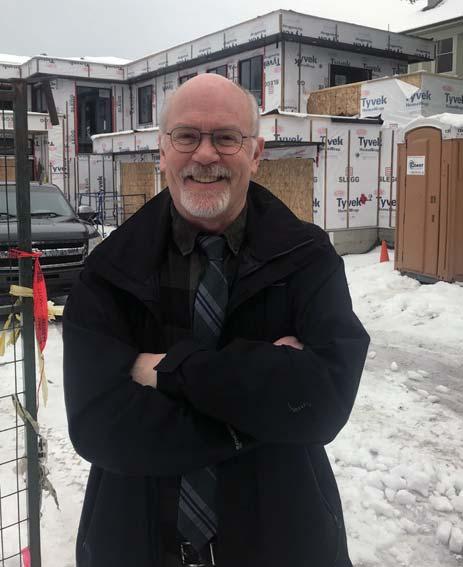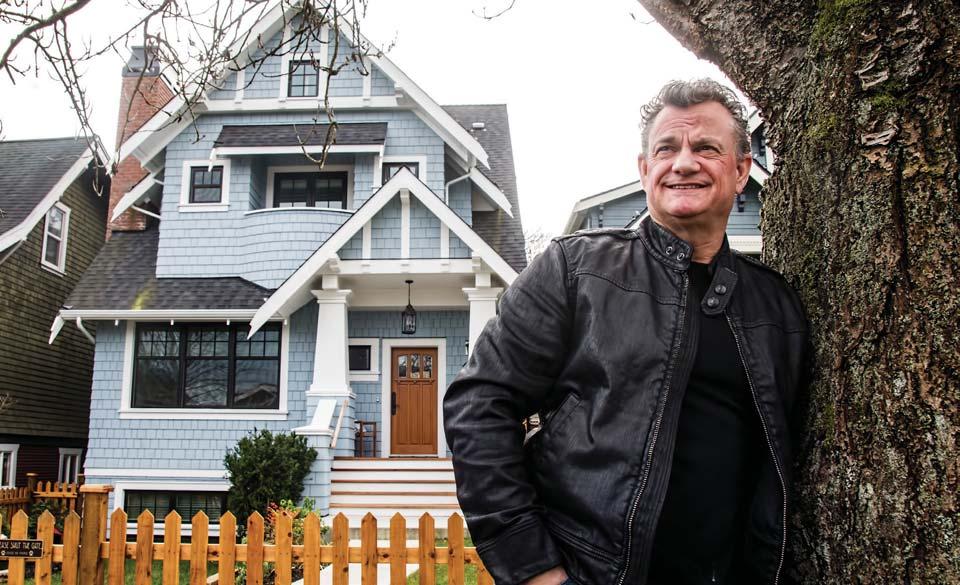
6 minute read
STEPPING UP
The B.C. Step Code is the most energy-saving building code in Canada, but some builders claim it is expensive, elitist and ineffectual in battling climate change
FRANK O’BRIEN
In December 2017 the B.C. government introduced the ambitious BC Energy Step Code, a building code with five steps towards creating net-greenhousegas-emitting residential buildings, or ‘net-zero’ homes, by 2032.
It is the toughest code in Canada and a testing ground for the new national building code, now in the works, that will also put an emphasis on climate change.
The Step Code is not yet mandatory and gives B.C. municipalities the option to have residential construction meet one or more steps of the Step Code as an upgrade to the existing code. (The City of Vancouver has its own building code and is moving towards having all new homes becoming net zero by 2030).
Step 1 is a minor improvement over the existing code, while the second step is a 10% improvement in efficiency. Step 3, which nine Metro Vancouver municipalities have already moved to, along with some of the larger centres in the Greater Victoria region, specifies a 20% improvement. Step 4 is a 40% upgrade from current standards.
Step 5 requires builders to construct homes that have net-zero greenhouse gas emissions, meaning the home produces more energy than it uses.
Rather than mandate particular building practices or materials, builders are free to choose how to achieve the performance targets. Home efficiency is measured in the number of kilowatt hours per square metre the home requires, the security of its envelope and how airtight it is. “It is a function of the efficiency of the HVAC [heating, ventilation and air conditioning] equipment, the tightness of the envelope, the degree of insulation, all these different things,” explains Ron Rapp, CEO of the Homebuilders Association of Vancouver (HAVAN).
A certified energy adviser must sign off on plans that meet performance models; then the final structure is checked with a blower door test, which uses a specialized fan to measure how tightly a building is sealed against air leakage.
A typical older house, due to natural leakage, may have 10 to 20 air changes per day. A Step 5 level house would have less than one air change daily.
Casey Edge, executive director of the Victoria Residential Builders
Association, fears the Step Code is being introduced too fast •
SUBMITTED

Builder Larry Clay with a Step 3 level house his company recently built on Vancouver’s Westside • CHUNG CHOW
Since buildings account for about 30% of greenhouse gas emissions, the direction of the Step Code appears laudable in fighting climate change, but home builders are finding just how steeply expensive it can become.
Some experts even warn that air tightness requirements can put homeowners at risk of cancer-causing radon gas.
For most builders, however, it is the collision of higher costs with the ascending Step Code that is the biggest concern.
A 2019 HAVAN modelling study of a standard new detached house estimated that the cost to implement Step 1 would be $5,600 above the current building code. To meet Step 3 would add $15,300 and that cost would rise to more than $24,000 at the Step 4 level.
At Step 5, primarily because of the much higher levels of insulation, advanced mechanical systems and ultra-high-performance windows, the cost soars to $48,220 for a typical house. “It would be much more than that on a large custom-built house: at least $70,000 to $110,000,” says Casey Edge, executive director of the Victoria Residential Builders Association and a consistent critic of the Step Code.
Edge says the costs are layered onto new homes, while the much larger pool of existing homes, many built decades ago, continue to emit most of the emissions.
Larry Clay, founder and president of Clay Construction Inc. in Langley and incoming national president of the Canadian Home Builders’ Association, sits on the industry’s National Net Zero Committee, which works with the federal government on building code standards.
His company builds eight to 10 houses per year valued at up to $3 million, all of them to Step 3 and up to net-zero standards.
Clay says it was fairly easy for B.C. builders to achieve Step 2 and even Step 3, but the challenges increase at higher levels, and it is not only about cost.
He cites the example of a large custom house he is building in Langley under a Step 3 building code. The client had considered going to Step 5 – net zero – until energy modelling showed the design changes that would be needed. These included much thicker walls, much smaller windows and changes to roof overhangs. The client said “no way” and kept with the original design.
“At what point,” Clay asks, “does a homeowner have the right to keep the design they want?”
He says window size and orientation could become a big issue under Step 4 or 5. For example, he notes, in Burnaby and Vancouver many homeowners may want a big-window north view of the Inlet and the mountains, but the Step Code would require small or no north-facing windows, without substantial costs added.
Clay says adding $25,000 to $50,000 onto the price of a new house may fly in Canada’s most expensive markets of Vancouver, Victoria or Toronto, but not in most of B.C. or Canada.
Builders in many smaller centres try to deliver new houses that cost around $300,000, he notes.
“Adding $24,000 to $50,000 to the cost would kill their business,” Clay says.
Clay – who is also the immediate past-president of HAVAN – and Edge both say the fact that different municipalities have conflicting Step Code requirements adds to the cost and confusion for builders and consumers.

Heavily insulated basements are part of all BC Energy Step Code requirements • CLAY CONSTRUCTION LTD.
“Municipalities are circumventing the purpose of the Step Code, which was to slowly improve the code to let builders and suppliers become familiar with it,” Clay says.
Edge says there are inherent dangers in moving too fast. He points to a 2018 study from Simon Fraser University (SFU), which showed a link between rising levels of radon gas and air-tight homes.
The study confirmed the presence of radon on the North Shore of Metro Vancouver, where the City of West Vancouver, the District of North Vancouver and the City of North Vancouver will all require Step 5 – which has the highest air tightness – as of July 1, 2021, the first municipalities in Canada to do so.
But Noah Questel, director of law and policy for the British Columbia Lung Association’s healthy indoor environments program, and a postdoctoral fellow at SFU, says the danger of radon gas is overstated and can be overcome. “While statistically we do see a clear correlation between energy efficiency [home] initiatives and occurrences of elevated radon, this is not a reason to oppose energy efficiency measures like the Step Code. Rather, if energy efficiency upgrades and codes include procedures for testing and mitigating for radon and other indoor air-quality issues, we can have clear benefits for both climate and human health,” Questel said in an email statement to Climate Change.
Clay, who becomes president of the Canadian Home Builders’ Association this May, notes that Canada’s new national building code, expected to be introduced in 2025, will also require much higher levels of energy efficiency and other measures to combat climate change.
Clay says home builders are as concerned about the environment as anyone and will meet any standards demanded, but that government incentives, perhaps mortgage industry price breaks, may be needed. “We will get there [to net zero]. We have to, but we need help,” Clay says. “Home builders can’t do it alone.”





